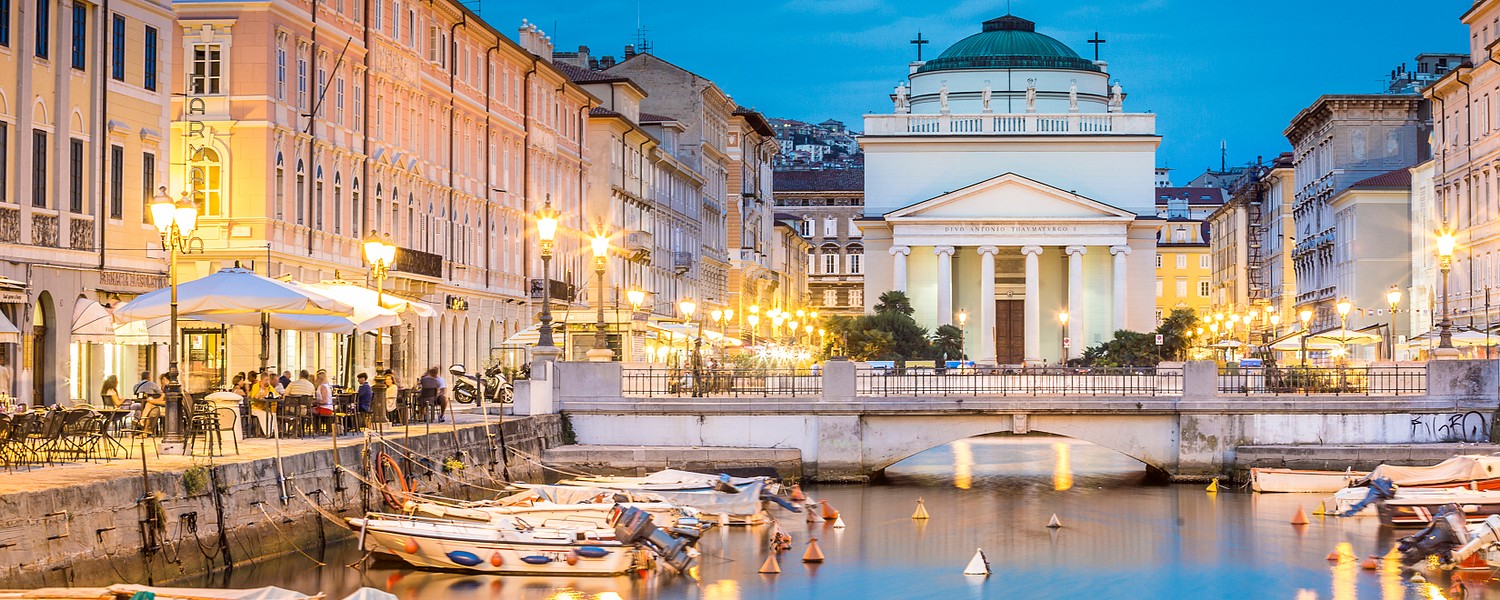
Provided by:
Sopotnicki/Shutterstock.com

Our travel guides are free to read and explore online. If you want to get your own copy, the full travel guide for this destination is available to you offline* to bring along anywhere or print for your trip.
*this will be downloaded as a PDF.Price
€4,95
The City
The guide was updated:
Situated in north-eastern Italy on the border to Slovenia, Trieste has always been the meeting point of trade and culture. The likes of James Joyce, Italo Svevo and Umberto Saba were all frequent visitors to this beautiful city. The historic city flourished as part of the Austro-Hungarian Empire during the period of 1867–1918, making it one of Central Europe’s most prosperous Mediterranean seaports, as well as its capital of literature and music.
With its close proximity to Slovenia the region has developed its own dialect. The dominant local Venetian dialect of Trieste is called ‘Triestine’ and is spoken in the city centre, while Slovenian is spoken in several of the city’s suburbs. There is also a large German-speaking population in the region. Trieste itself has been divided into eleven zones (beginning with the most southerly) in order to make things easier for visitors to get oriented. The city centre is highly urbanised, while the south contains of small towns and villages such as Sgonico, Monrupino, Duino, Basovizza and San Pelagio, which are predominantly inhabited by the Slovenian-speaking minority.
Visitors to Trieste will foremost notice the numerous examples of Art Nouveau and Neoclassical architecture from its Austrian past. Visits to some of the small towns outside of Trieste are highly recommended, as they – together with the city centre – give a feeling of the ‘true’ Trieste. Its history cannot be forgotten, nor should it, as this is what makes up the Trieste of today.
With its close proximity to Slovenia the region has developed its own dialect. The dominant local Venetian dialect of Trieste is called ‘Triestine’ and is spoken in the city centre, while Slovenian is spoken in several of the city’s suburbs. There is also a large German-speaking population in the region. Trieste itself has been divided into eleven zones (beginning with the most southerly) in order to make things easier for visitors to get oriented. The city centre is highly urbanised, while the south contains of small towns and villages such as Sgonico, Monrupino, Duino, Basovizza and San Pelagio, which are predominantly inhabited by the Slovenian-speaking minority.
Visitors to Trieste will foremost notice the numerous examples of Art Nouveau and Neoclassical architecture from its Austrian past. Visits to some of the small towns outside of Trieste are highly recommended, as they – together with the city centre – give a feeling of the ‘true’ Trieste. Its history cannot be forgotten, nor should it, as this is what makes up the Trieste of today.


